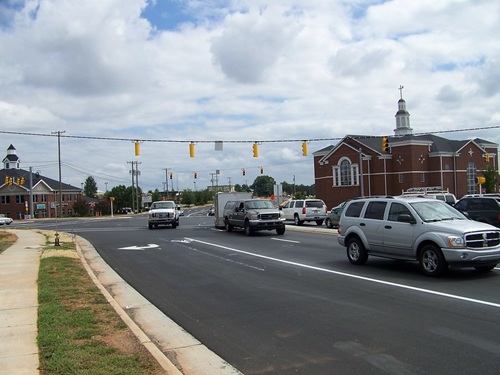The Federal Highway Administration sent a report to Congress on March 2 detailing the agency’s commitment to “advance widespread implementation of the Complete Streets design model” to help improve safety and accessibility for all users.
[Above photo by the Ohio DOT]
The report – entitled “Moving to a Complete Streets Design Model: A Report to Congress on Opportunities and Challenges” – identifies what FHWA calls “five overarching opportunity areas” that will guide the agency as it moves ahead with efforts to increase “Complete Streets.”
Those opportunity areas are:
- Improve data collection and analysis to advance safety for all users.
- Support rigorous safety assessment during project development and design to help prioritize safety outcomes across all project types.
- Accelerate adoption of standards and guidance that promote safety and accessibility for all users and support innovation in design.
- Reinforce the primacy of safety for all users in the interpretation of design standards, guidelines, and project review processes.
- Make Complete Streets FHWA’s default approach for funding and designing non-access-controlled roadways.
The agency said one of the goals of its “Complete Streets” initiative is to increase the proportion of transportation projects that states and other Federal-aid highway funding recipients routinely plan, design, build, and operate that are safe and accessible for all users.
FHWA added that its report to Congress highlights how it is now reassessing and revising its own policies, regulations, processes, and practices to make it easier for state and local agencies to advance and build Complete Streets.

“A ‘Complete Street’ is safe, and feels safe, for everyone using the street,” explained Stephanie Pollack, FHWA’s deputy administrator, in a statement.
“We can’t keep people safe on our roads if we don’t have safer roads and roads that slow down drivers to safe speeds,” she added. “Through our ‘Complete Streets’ initiative, FHWA will play a leadership role in providing an equitable and safe transportation network for travelers of all ages and abilities, including vulnerable road users and those from underserved communities that have faced historic disinvestment.”
Many state departments of transportation across the country have already adopted “Complete Streets” programs on their own, as noted in this report compiled by the American Association of State Highway and Transportation Officials.
For example, in December 2021, the California Department of Transportation unveiled a new “Complete Streets” policy for all new transportation projects it funds or oversees in order to provide “safe and accessible options” for people walking, biking and taking transit.
The South Carolina Department of Transportation put in place what it called a wide-ranging “Complete Streets” policy for the state-owned highway system in February 2021.
That policy requires the South Carolina DOT to work with the state’s regional transportation planning partners and regional transit providers to identify and include walking, bicycling, and transit needs as part of their regional mobility plans.
 Top Stories
Top Stories


